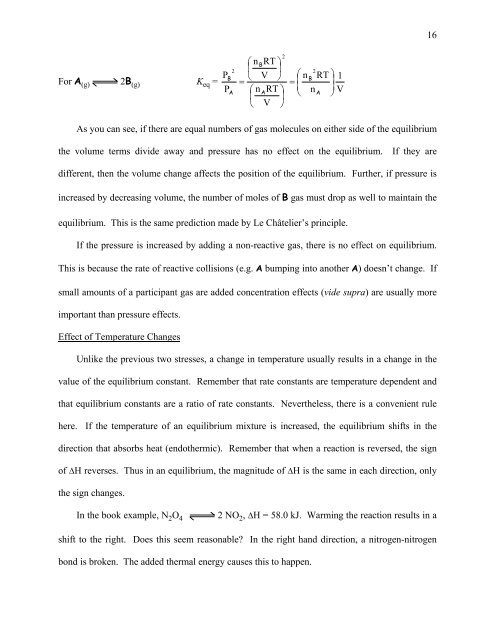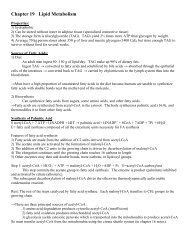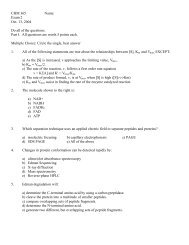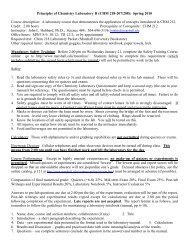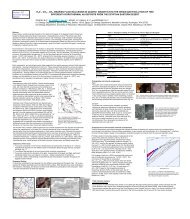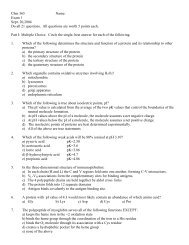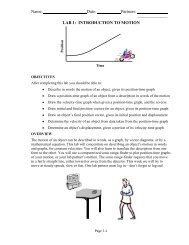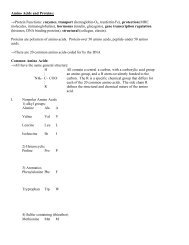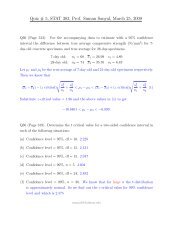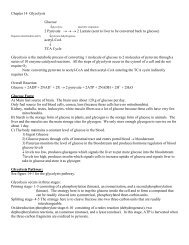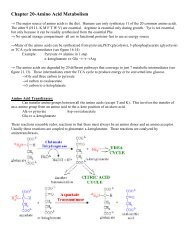Chapter 15 – Chemical Equilibrium
Chapter 15 – Chemical Equilibrium
Chapter 15 – Chemical Equilibrium
Create successful ePaper yourself
Turn your PDF publications into a flip-book with our unique Google optimized e-Paper software.
16<br />
For A (g) 2B (g) K eq =<br />
P<br />
2<br />
B<br />
P<br />
A<br />
2<br />
⎛ n<br />
BRT<br />
⎞<br />
⎜ ⎟<br />
V<br />
=<br />
⎝ ⎠<br />
⎛ n<br />
ART<br />
⎞<br />
⎜ ⎟<br />
⎝ V ⎠<br />
2<br />
⎛ n RT ⎞<br />
⎜<br />
B<br />
= ⎟<br />
n<br />
⎝ A ⎠<br />
1<br />
V<br />
As you can see, if there are equal numbers of gas molecules on either side of the equilibrium<br />
the volume terms divide away and pressure has no effect on the equilibrium. If they are<br />
different, then the volume change affects the position of the equilibrium. Further, if pressure is<br />
increased by decreasing volume, the number of moles of B gas must drop as well to maintain the<br />
equilibrium. This is the same prediction made by Le Châtelier’s principle.<br />
If the pressure is increased by adding a non-reactive gas, there is no effect on equilibrium.<br />
This is because the rate of reactive collisions (e.g. A bumping into another A) doesn’t change. If<br />
small amounts of a participant gas are added concentration effects (vide supra) are usually more<br />
important than pressure effects.<br />
Effect of Temperature Changes<br />
Unlike the previous two stresses, a change in temperature usually results in a change in the<br />
value of the equilibrium constant. Remember that rate constants are temperature dependent and<br />
that equilibrium constants are a ratio of rate constants. Nevertheless, there is a convenient rule<br />
here. If the temperature of an equilibrium mixture is increased, the equilibrium shifts in the<br />
direction that absorbs heat (endothermic). Remember that when a reaction is reversed, the sign<br />
of ∆H reverses. Thus in an equilibrium, the magnitude of ∆H is the same in each direction, only<br />
the sign changes.<br />
In the book example, N 2 O 4<br />
2 NO 2 , ∆H = 58.0 kJ. Warming the reaction results in a<br />
shift to the right. Does this seem reasonable In the right hand direction, a nitrogen-nitrogen<br />
bond is broken. The added thermal energy causes this to happen.


